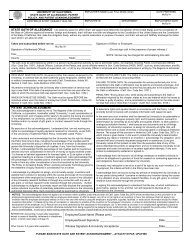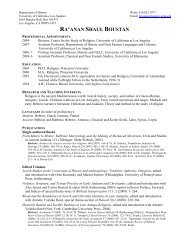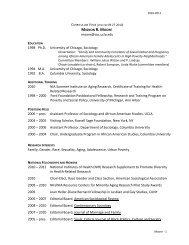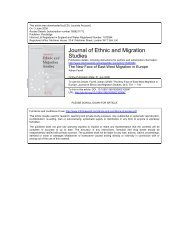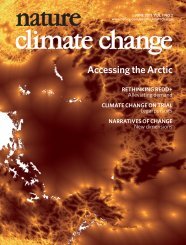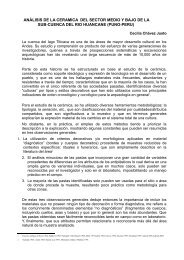The Long-Term Effects of Africa's Slave Trades - Social Sciences ...
The Long-Term Effects of Africa's Slave Trades - Social Sciences ...
The Long-Term Effects of Africa's Slave Trades - Social Sciences ...
Create successful ePaper yourself
Turn your PDF publications into a flip-book with our unique Google optimized e-Paper software.
<strong>The</strong> rule <strong>of</strong> law in 2000 is from Kaufmann et al. (2003). It is an index<br />
ranging from −2.5 to 2.5 that measures the extent to which agents have<br />
confidence in and abide by the rules <strong>of</strong> society.<br />
When taking the natural log <strong>of</strong> variables that may take on the value<br />
<strong>of</strong> zero, I replace the zero observations with 1 × 10 n , where n is the largest<br />
integer value possible subject to 1×10 n being less than the smallest non-zero<br />
observation in the data.<br />
<strong>The</strong> distance instruments measure the shortest sailing distances to the<br />
location <strong>of</strong> demand in the trans-Atlantic and Indian Ocean slave trades, and<br />
the shortest overland distance to the locations <strong>of</strong> demand in the Red Sea<br />
and trans-Saharan slave trades. In practice, distances are calculated using<br />
the great circle distance between two locations. <strong>The</strong> formula for this is:<br />
d ij = arccos{sin(La i )sin(La j ) + cos(La i )cos(La j )cos(Lo i − Lo j )} × 111.12,<br />
where d ij is the distance in kilometers between location i and j, La i is<br />
the latitude <strong>of</strong> location i in degrees, and Lo i is the longitude <strong>of</strong> location<br />
i in degrees. When calculating the sailing distances, I do not allow ships<br />
to sail across land. 29 For example, for voyages from Northern Africa in<br />
the trans-Atlantic slave trades, I calculate the sailing distance through the<br />
Mediterranean sea and the Strait <strong>of</strong> Gibraltar to the closest market in the<br />
Atlantic Ocean. For the distance from these countries in the Indian Ocean<br />
slave trade, I calculate the sailing distance through the Mediterranean sea,<br />
and then south around the Cape <strong>of</strong> Good Hope. Similarly, when calculating<br />
distances from East African countries during the trans-Atlantic slave trade,<br />
and for distances from West African countries during the Indian Ocean slave<br />
trade, I calculated the sailing distance around the Cape <strong>of</strong> Good Hope.<br />
<strong>The</strong> centroid <strong>of</strong> each country is calculated using the Centroid Utility in<br />
ArcGIS. For five countries where the centroid falls outside the land borders<br />
<strong>of</strong> the country (Gambia, Somalia, Cape Verde, Mauritius and Seychelles)<br />
the point within the country closest to the centroid is used. <strong>The</strong> location<br />
on the coast that is closest to each country’s centroid is identified using the<br />
Proximity Utility in ArcGIS.<br />
29 As well, I do not allow ships to sail through the Suez Canal since it was not completed<br />
until 1869.<br />
45




